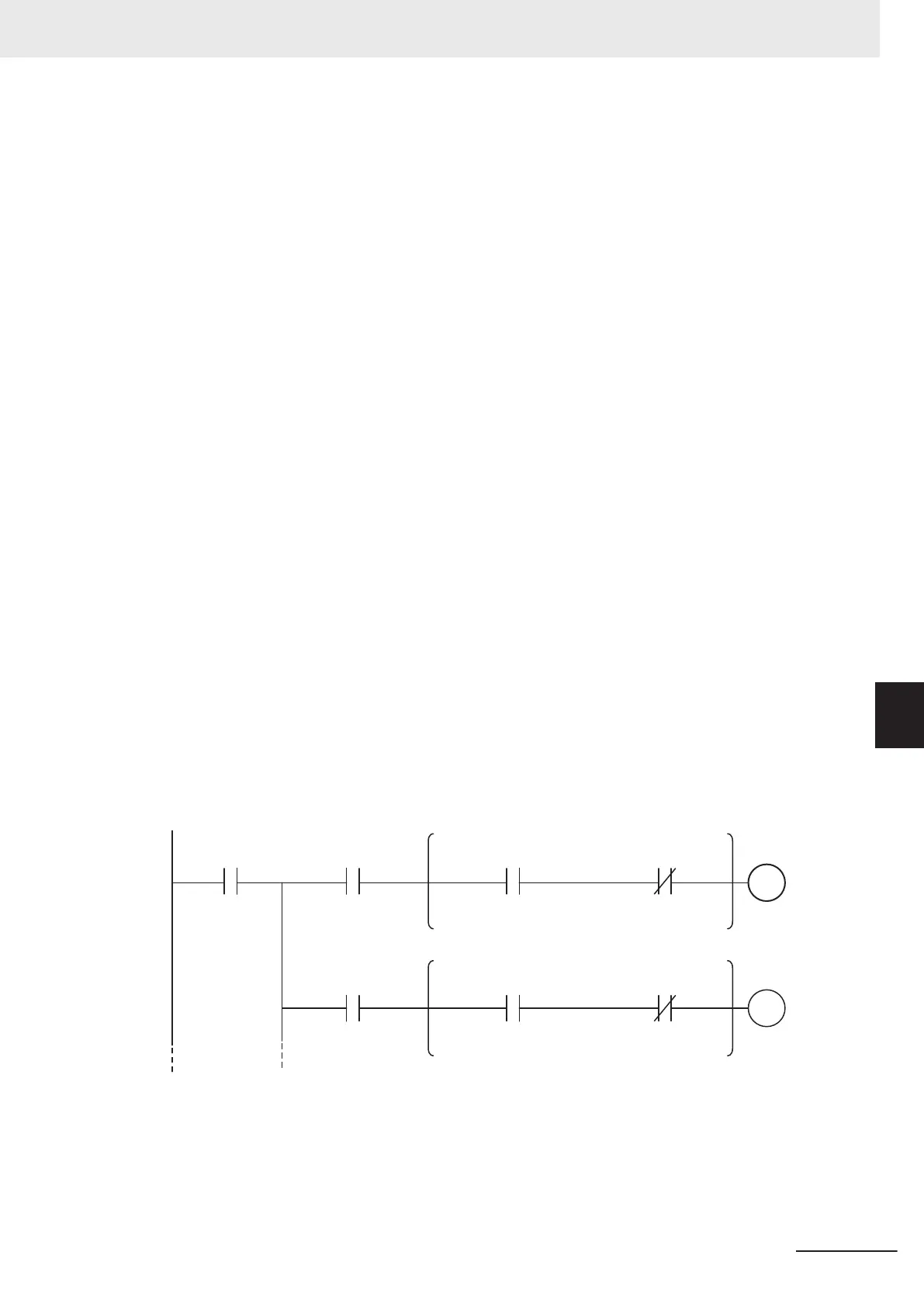*1. This is a system-defined variable for NJ-series CPU Units.
For NX701 and NX102 CPU Units, the variable varies depending on the built-in EtherNet/IP port, as
shown below
.
Built-in EtherNet/IP port 1: _EIP1_EtnOnlineSta
Built-in EtherNet/IP port 2: _EIP2_EtnOnlineSta
For NX1P2 CPU Units, the variable is as below.
Built-in EtherNet/IP port 1: _EIP1_EtnOnlineSta
*2. This is a system-defined variable for NJ-series CPU Units.
For NX701 and NX102 CPU Units, the variable varies depending on the built-in EtherNet/IP port, as
shown below.
Built-in EtherNet/IP port 1: _EIP1_EstbTargetSta
Built-in EtherNet/IP port 2: _EIP2_EstbTargetSta
For NX1P2 CPU Units, the variable is as below.
Built-in EtherNet/IP port 1: _EIP1_EstbTargetSta
*3. This is a system-defined variable for NJ-series CPU Units.
For NX701 and NX102 CPU Units, the variable varies depending on the built-in EtherNet/IP port, as
shown below.
Built-in EtherNet/IP port 1: _EIP1_TargetPLCModeSta
Built-in EtherNet/IP port 2: _EIP2_TargetPLCModeSta
For NX1P2 CPU Units, the variable is as below.
Built-in EtherNet/IP port 1: _EIP1_TargetPLCModeSta
*4. This is a system-defined variable for NJ-series CPU Units.
For NX701 and NX102 CPU Units, the variable varies depending on the built-in EtherNet/IP port, as
shown below.
Built-in EtherNet/IP port 1: _EIP1_TargetPLCErr
Built-in EtherNet/IP port 2: _EIP2_TargetPLCErr
For NX1P2 CPU Units, the variable is as below.
Built-in EtherNet/IP port 1: _EIP1_TargetPLCErr
Programming Example for Normal Operation Detection
The following program can be used to confirm that normal communications are being performed for
each target node. If the Controller status is included in the tag data, the status of the Controller can
also be detected.
•
Normal Operation Detection Programming Example 1
Online
(_EIP_EtnOnlineSta)
*1
Normal Target Node
Information (#1)
_EIP_EstbTargetSta[1]
*2
Normal Target Node
Information
(#2)
_EIP_EstbTargetSta[2]
*2
Target PLC Operating
Mode (#2)
_EIP_TargetPLCModeSta[2]
*3
Target PLC Operating
Mode (#1)
_EIP_TargetPLCModeSta[1]
*3
Target PLC Error
Information (#1)
_EIP_TargetPLCErr[1]
*4
Target PLC Error
Information (#2)
_EIP_TargetPLCErr[2]
*4
Node 1 data
link operation
normal
Node 2 data
link operation
normal
• Normal Operation Detection Programming Example 2
7 Tag Data Link Functions
7-81
NJ/NX-series CPU Unit Built-in EtherNet/IP Port User’s Manual (W506)
7-3 Ladder Programming for Tag Data Links
7
7-3-1 Ladder Programming for Tag Data Links

